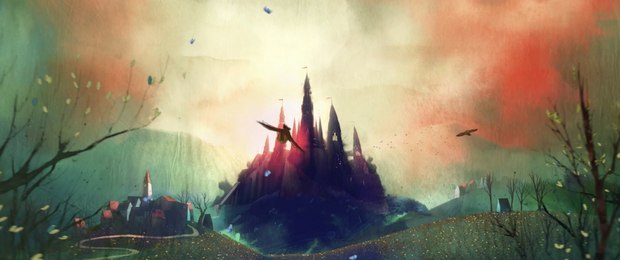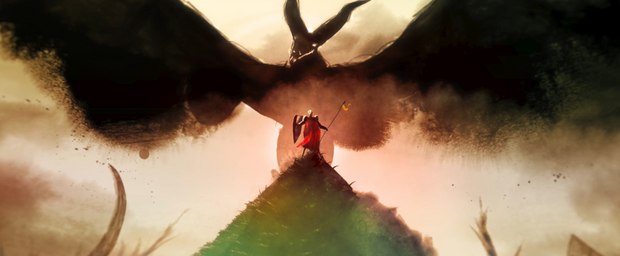Barcelona-based animation studio Glassworks teams with Headless Productions to deliver two animated tales for J. A. Bayona’s new film.
We all have monsters. Monsters in our conscience, in our memories, in ourselves; and all of them explain a little story about what we are. In J. A. Bayona’s new film, A Monster Calls, the monster tells the main character, Conor (played by Lewis MacDougall), three stories, two of which were created as a collaboration between Barcelona-based animation studio Glassworks and Headless Productions.
Headless was already working with Bayona to develop the creative direction of the tales when Glassworks joined the project. “This was a very special order, with non-standard premises,” recounts Javier Verdugo, head of 3D at Glassworks Barcelona. “The director wanted an animation never seen before, his aim was to create something visually new and outstanding. Which meant a technical and creative challenge for us.”
In addition, both pieces had to be integrated with the artistic universe of the main character, who invokes the monster and its fables through his drawings. Conor and his mother are connected through their art, and the tales had to invoke the colors and shapes of their paintings. “The means were not the essential, the essential was the end,” Verdugo adds, “and the end was the tales to look like paintings.”
Working from more than 250 concept designs provided by Headless, -- one for each shot -- the Glassworks team began a series of tests to translate the visual concepts drawn on paper into 3D moving images. The final aim of the project was that any of the frames from the two pieces would be an exact match with the original concept designs from Headless.
The tales are metaphors of recurring subjects in the film: the fear of loss, the thin line between good and evil or, simply, that things are not always how they look like. Animated interludes, but not independent parts of the main plot. For this reason, it was important that both universes -- the real world and the animated story -- lived together. In this sense, it was essential to do a proper integration not only narratively speaking, but also in an aesthetic sense. So, for example, “Tale 1” uses a technique close to watercolor, has a less realistic design, is flatter and has no textures. However, “Tale 2” is closer to stop motion or miniature; and despite it preserves some craftwork feeling in the painting, some elements have more volume, so their transition to the real world is more organic. Actually, the end of the second tale coexists with Conor during the house destruction scene -- with the VFX also created by Glassworks.
“We wanted the transitions from one shot to the other to be a continuum, to be linked as an animated sequence shot,” Verdugo says. To the challenge of generating transitions that worked as a new shot, tricky and incessant camera movements were added. Rotations, spins, travellings and pannings that provide dynamism to the tales, and help maintain the interest of the audience. The completed tales employed 24 frames per second, but occasionally frames were repeated or the speed was slowed down in order to create visual effects; delicate details that maybe are not noticed at first sight, but help enrich the pieces.
A team composed by more than 30 artists from different disciplines worked tirelessly during one year and a half. All the work was done in 3D -- modelling, texturizing, rigging, illumination, animation -- with realistic quality and, from there, it transferred to a 2D look. Very different washes were used, and after all the work was done each frame was painted again, so the tales were unified and the feeling of drawing was magnified. Huge amounts of data were managed, massive render hours were needed and tons of compo layers were used in order to harmonize the different techniques.
A Monster Calls fables help understanding episodes of reality that are difficult to explain through traditional narrative. And this is also the mission of the making-of that Glassworks has prepared about these two animated oasis. A route through the most intimate parts of these tales, that unveils the magic of the VFX and the art of creating fantastic realities.












